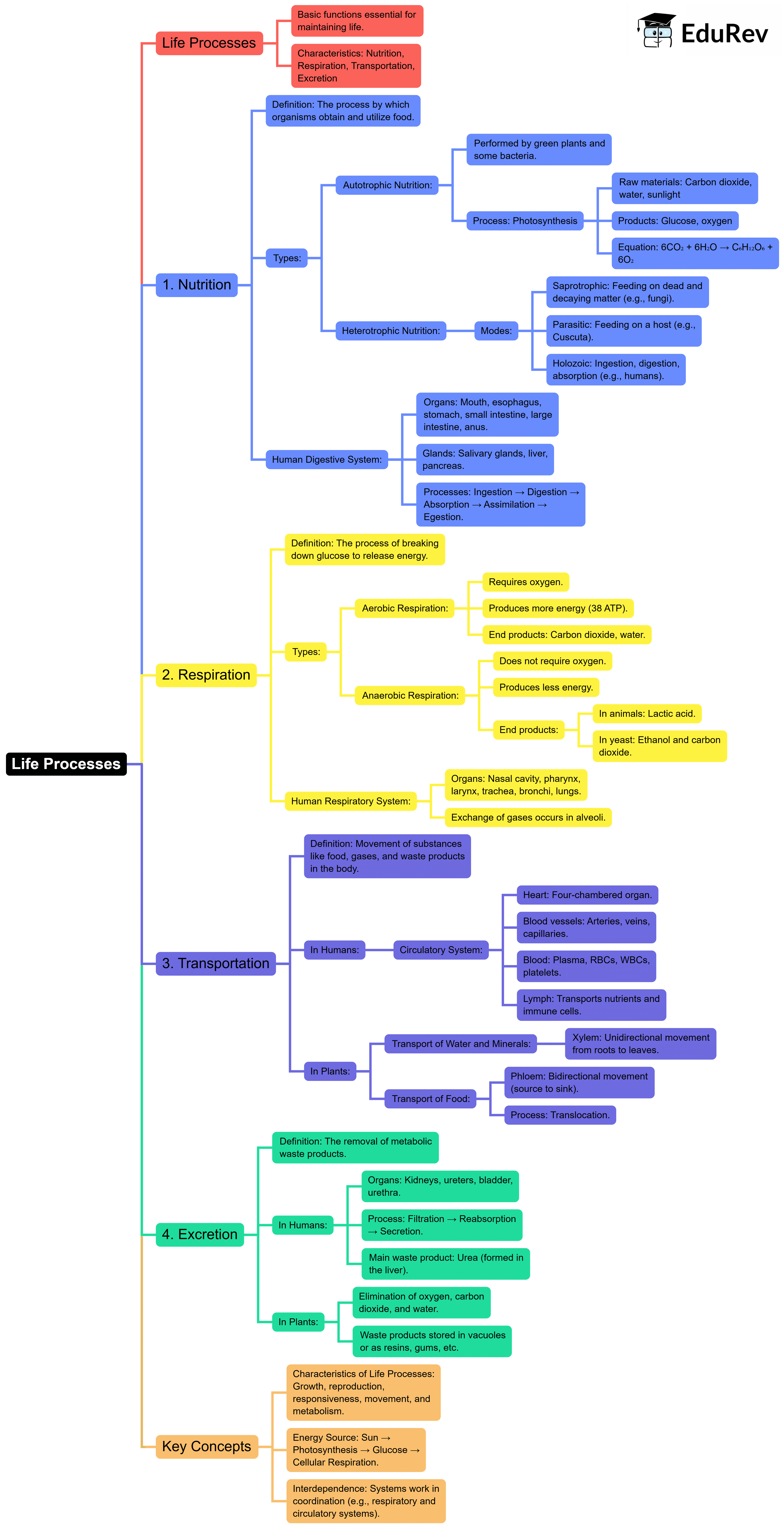Class 10 Exam > Class 10 Notes > Science Class 10 > Mind Map: Life Processes
Mind Map: Life Processes | Science Class 10 PDF Download

The document Mind Map: Life Processes | Science Class 10 is a part of the Class 10 Course Science Class 10.
All you need of Class 10 at this link: Class 10
|
80 videos|661 docs|80 tests
|
FAQs on Mind Map: Life Processes - Science Class 10
| 1. What are the main life processes essential for the survival of living organisms? |  |
Ans. The main life processes essential for the survival of living organisms include nutrition, respiration, transportation, excretion, regulation, and reproduction. Nutrition involves the intake of food and its conversion into energy. Respiration is the process of obtaining energy from food by breaking it down. Transportation refers to the movement of substances within the organism. Excretion is the elimination of waste products. Regulation involves maintaining homeostasis, and reproduction is the process of producing offspring to ensure the continuation of the species.
| 2. How do plants perform the process of photosynthesis? |  |
Ans. Plants perform photosynthesis primarily in their leaves, utilizing sunlight, carbon dioxide (CO₂), and water (H₂O) to produce glucose (C₆H₁₂O₆) and oxygen (O₂). The chlorophyll in the chloroplasts captures sunlight, which provides the energy needed for the chemical reactions. During photosynthesis, carbon dioxide is absorbed from the atmosphere, and water is taken up from the soil. The overall equation for photosynthesis can be summarized as 6CO₂ + 6H₂O + light energy → C₆H₁₂O₆ + 6O₂.
| 3. What is the role of the circulatory system in living organisms? |  |
Ans. The circulatory system plays a vital role in transporting nutrients, gases, hormones, and waste products throughout the body. It consists of the heart, blood vessels, and blood. The heart pumps oxygenated blood from the lungs to the body tissues and returns deoxygenated blood back to the lungs for reoxygenation. This system ensures that cells receive the necessary substances for metabolism and that waste products are efficiently removed.
| 4. What are the differences between aerobic and anaerobic respiration? |  |
Ans. Aerobic respiration occurs in the presence of oxygen and involves the complete breakdown of glucose into carbon dioxide and water, releasing a significant amount of energy (approximately 36 ATP molecules per glucose molecule). In contrast, anaerobic respiration occurs in the absence of oxygen and results in the partial breakdown of glucose, leading to products such as lactic acid or ethanol, and yields less energy (approximately 2 ATP molecules per glucose molecule). Aerobic respiration is more efficient than anaerobic respiration.
| 5. Why is excretion important for living organisms? |  |
Ans. Excretion is crucial for living organisms as it involves the removal of metabolic waste products that can be harmful if accumulated in the body. Waste products include carbon dioxide, urea, and excess salts. If these substances are not eliminated, they can lead to toxicity and disrupt normal physiological functions. Excretion helps maintain homeostasis by regulating the internal environment, including the balance of fluids and electrolytes.
Related Searches






















